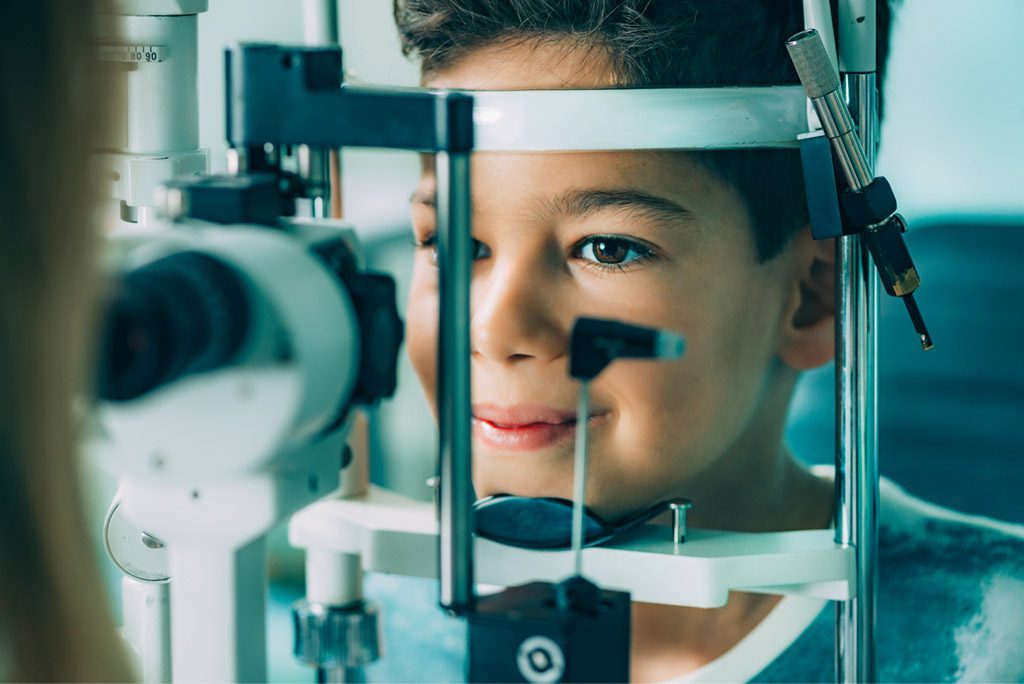
Having the family go through a comprehensive eye check means early detection of eye problems and lower changes of complicated treatments down the road.
Eye and vision problems can affect anyone at any age. To find out if there are potential genetic or acquired issues in ones’ vision, it is worth having the entire family undergo a complete eye screening.
Many eye diseases have no symptoms in the early stages; and by the time your vision is affected, it may be too late for treatment. Early detection and treatment can often prevent permanent vision loss, and screening is especially important if you have the following:
- Family history of blinding eye conditions such as glaucoma and age-related macular degeneration
- High myopia (more than -6.00 dioptres or ‘600 degrees’)
- Medical problems such as hypertension and rheumatoid arthritis
- On medication which may affect the eyes, such as steroids
CHILDREN’S EYE ISSUES
Amblyopia (lazy eye) is where the vision of one or both eyes is significantly decreased due to abnormal development of vision in infancy or childhood. The younger the child, the better the treatment results. Treatment includes removing a congenital cataract, lifting a droopy eyelid or correcting the refractive error with glasses, and forcing the child to use the weaker eye via various means. Strabismus or misalignment is one of the causes of lazy eye, and in Singapore, exotropia or outward deviation is more common rather than esotropia, or crossed eyes.
Misalignment can cause loss of vision, lazy eye, double vision or loss of depth perception. Treatment is necessary to straighten the eye and regain normal function. Parents often feel that children are too young to have eye check-ups, but an ophthalmologist can do a detailed eye examination for children of all ages, even a newborn!
MYOPIA
Near-sightedness affects nearly half of all Singaporean children by age nine. Myopia can lead to blinding complications including retinal detachment and macular degeneration. Early diagnosis allows spectacles and contact lenses to be used to correct the vision. Interventions such as minimising near work, increasing outdoor play and treatment with atropine eyedrops can slow down the progression.
CATARACTS
Often caused by ageing, it can also occur because of diabetes, smoking, overexposure to sunlight and certain medications. Cataract deteriorates vision and leads to eventual blindness, and will not subside untreated. With advances such as ‘bladeless’ surgery and premium intraocular lenses, cataract surgery can restore vision and even correct the refractive error.
GLAUCOMA
This is where increased fluid pressure in the eye causes damage to the eye’s optic nerve, leading to irreversible blindness. Because some glaucomas manifest without warning, early detection and treatment will ease pressure build-up before irreversible damage can occur.
DIABETES
This causes changes to the blood vessels that affect the retina, and is a leading cause of adult blindness. These blood vessels can leak fluid and fragile new blood vessels can form and bleed into or damage the retina. Only a detailed examination can pick it up early when it is more treatable. Pregnant diabetic women require a comprehensive examination during the first trimester and monitoring throughout pregnancy. Even patients with well-controlled diabetes need regular eye checks as the risk of diabetic eye disease increases with the duration of diabetes.
AGE-RELATED MACULAR DEGENERATION (AMD)
AMD affects the central part of the retina (macula) responsible for sharp vision. Early detection can prevent significant vision loss because factors such as smoking habits and diet can be modified early and nutritional supplements taken to slow down progression.







